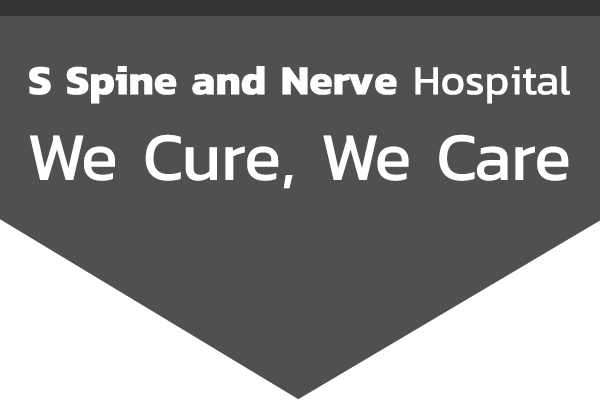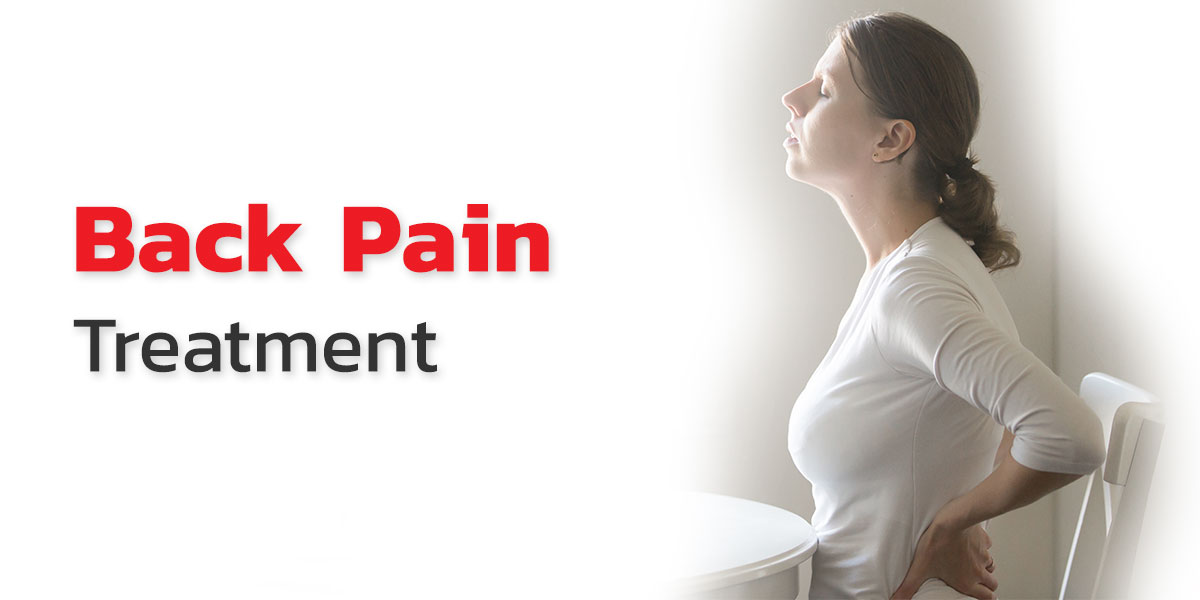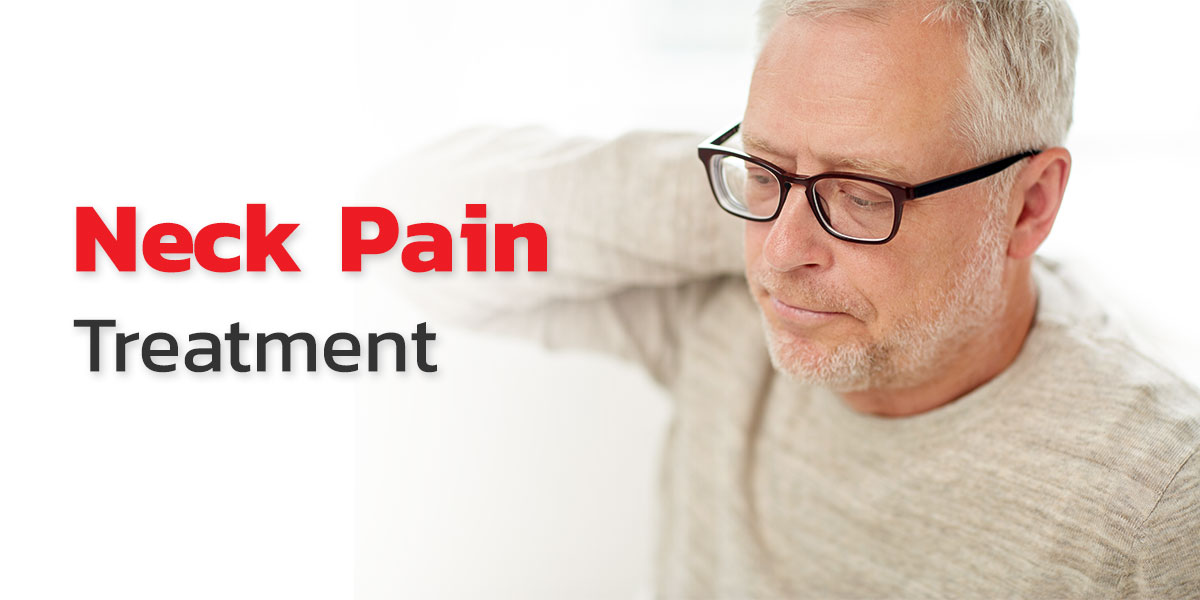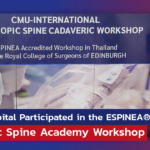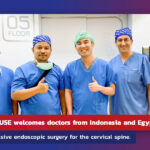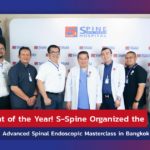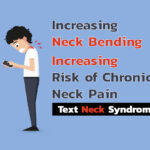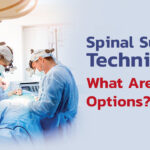Relieve the discomfort of cervical spine pillow syndrome caused by compressed nerves using the PSCD technique.
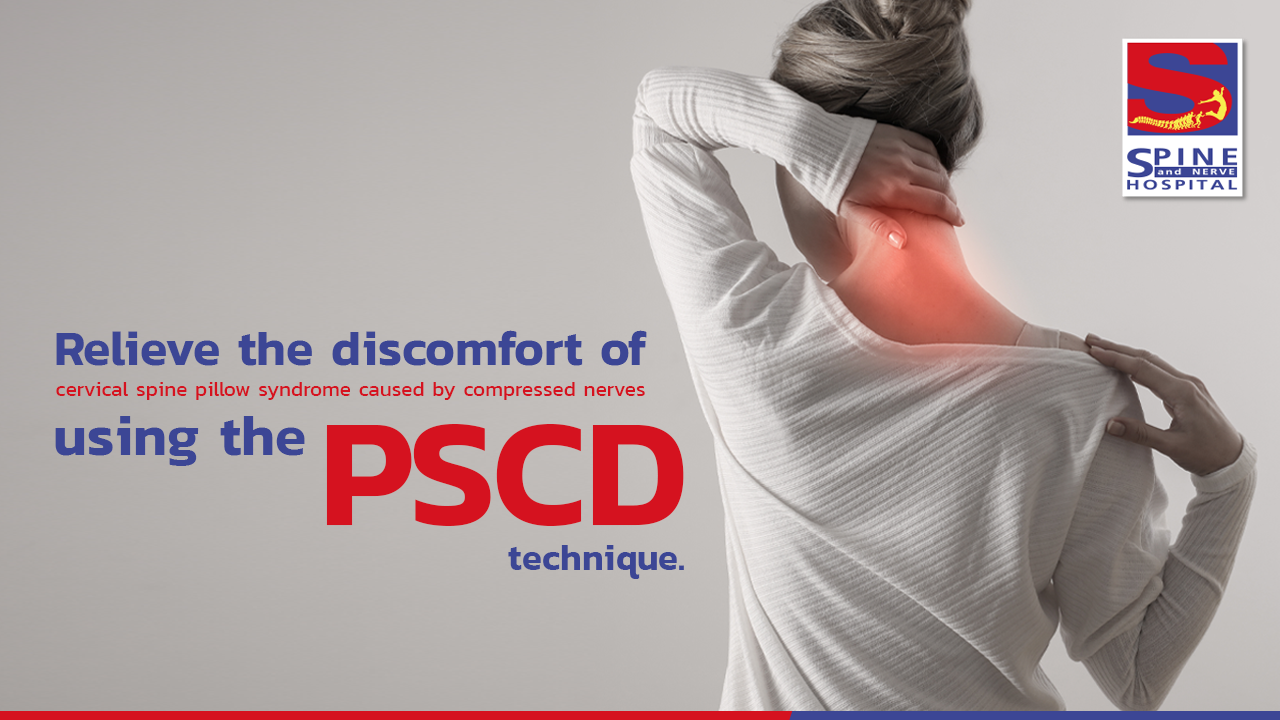
Have you ever experienced neck pain or pain at the back of your head? Do you also have symptoms such as pain radiating down your arm, a headache at the back of your head, numbness in your fingers, and weakness due to compression of the cervical nerve?
Causes and Risk Behaviors of Improper Neck Usage
Cervical spondylosis, which is the compression of the nerves in the neck, can occur both as a result of accidents and lifestyle habits. In cases of accidents, injuries can cause the cervical disc to be herniated, resulting in movement or compression of the spine or nerves.
For the group of people who develop cervical spondylosis due to lifestyle habits, there are common risky behaviors that involve improper neck usage, such as:
- Prolonged use of the neck in improper postures for more than 2 hours, such as bending, folding, or tilting the neck.
- Aggressive behavior, such as jerking or twisting the neck, or carrying heavy items on the head.
- Unbalanced body structure since birth, such as having a twisted neck bone.
These causes often lead to problems such as chronic neck pain, stiffness, shoulder pain or pain at the base of the skull, shooting pain down the arm, numbness, and some people may experience weakness. Medical professionals have stated that the main cause of these symptoms is due to lifestyle habits and it can be observed that there is an increasing number of younger patients with cervical spondylosis, a condition where the bones in the neck degenerate, compressing the nerves.

There are two types of symptoms that can occur with cervical spine pillow syndrome:
- Head and neck pain may occur due to cervical disc compression to nerve fibers in the upper cervical spine.
- Pain, numbness, tingling in the shoulder or weakness may occur due to cervical spine compression or dislocation of cervical vertebrae, causing nerve compression.
If the compression is severe or left untreated for a long time, it can lead to permanent numbness and weakness in the arms.
Diagnosis:
If a patient with cervical spine disorder has been taking medication for over a month but the symptoms of neck pain or tingling in the arms disappear only for a short period and then return, the doctor will perform a neurological examination of the cervical spine by conducting an X-ray and MRI to identify the root cause of the symptoms.
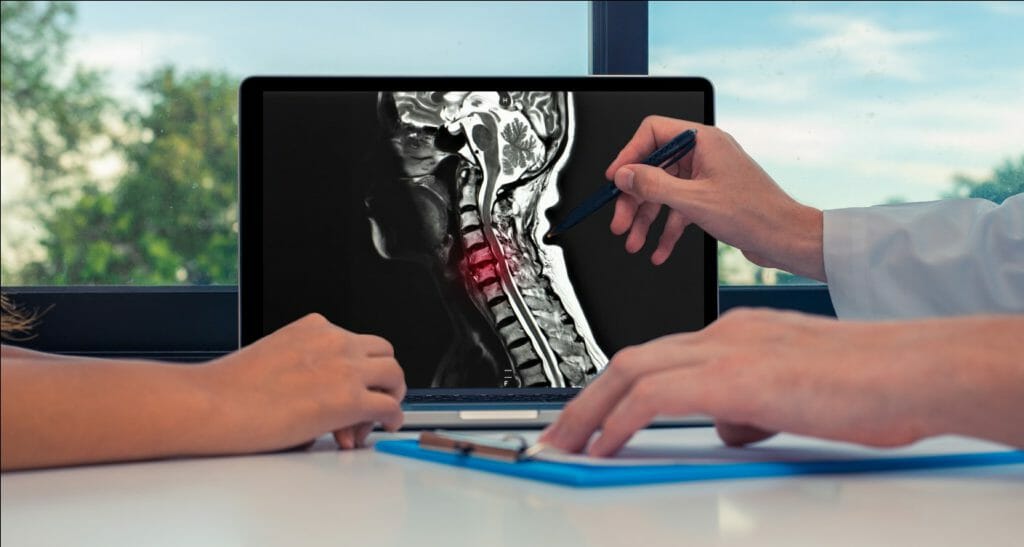
Treatment guidelines for cervical nerve root compression disease
Currently, there are modern treatment tools that help physicians make accurate diagnoses. Treatment can be divided into two groups:
Group 1 – Mild Symptoms
The first step is to modify behavior and lifestyle if pain is present. If the symptoms persist, the physician may prescribe various pain-relieving medications along with appropriate physical therapy. Symptoms often improve within a few weeks.
Group 2 – Patients with indications for surgical treatment
Patients in this group often have chronic neck pain, shoulder pain, or pain at the base of the neck that has been present for a long time and has not improved with medication or physical therapy. They may also experience radiating pain down their arms, which is caused by nerve compression. In this case, the physician will perform a PSCD (Percutaneous Stenoscopic Cervical Decompression) procedure, which involves using a high-precision endoscope to enter the cervical spine and remove the impinging cervical nerve root. After the procedure, patients should follow the physician’s post-operative instructions for long-lasting recovery.
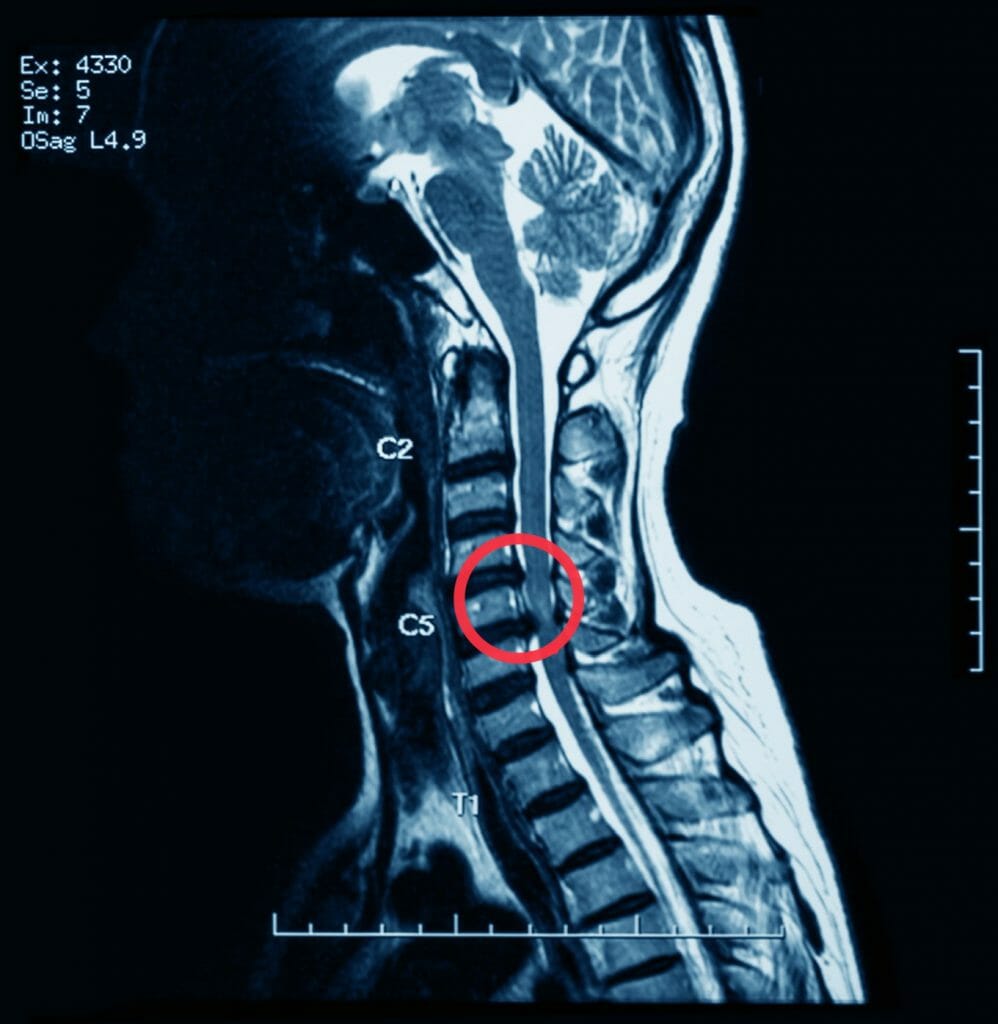
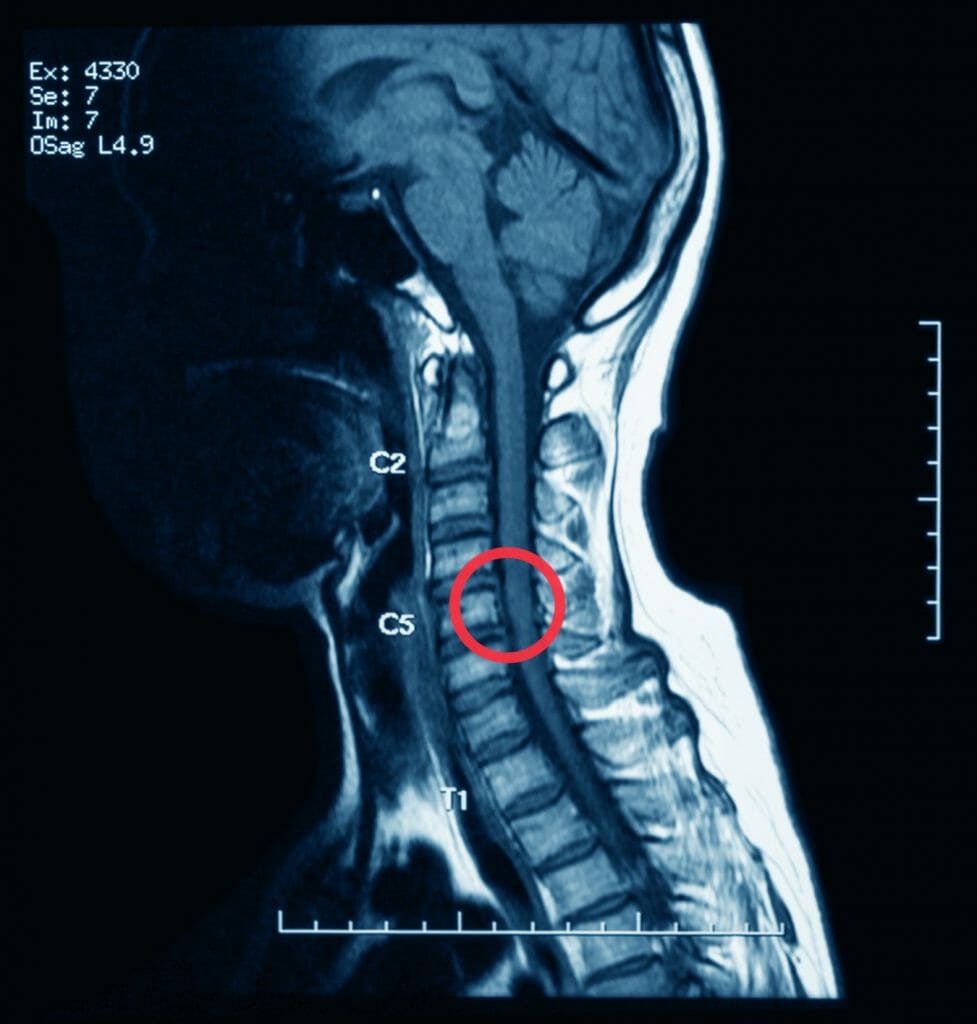
Advantages:
- Reduces muscle damage and pain.
- Incision size is small, at only 0.5 centimeters.
- Large incisions are not necessary.
- No need for additional devices in the body.
- Low blood loss and fewer complications than major surgery.
- Enables patients to recover quickly after surgery.
Disadvantages:
Spine surgery using the PSCD technique is a new technology, so it requires the expertise of a specialist physician in conjunction with patient treatment, making it less common and only found at specialized hospitals for spinal treatment.


